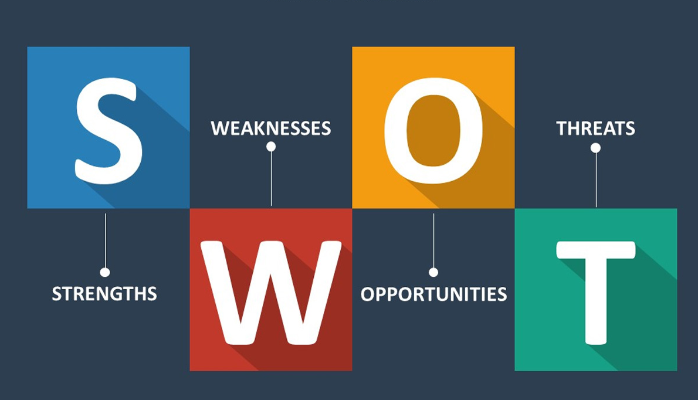Surviving or Thriving? Principles for Creating Longevity in Your Role
How many strength coaches have been handed the call sheet on 4th and one?
How about asked to draw up the in-bounding play when you’re down three with :02 left on the clock? My guess is zero, although it would make for some entertaining games and we often think we’re more than capable. The reality is strength and conditioning is a process-based field within an outcome-based industry.
This fact alone makes accurately evaluating our success nearly impossible for administration and thus can cause some controversial decisions to be made in regards to retention. Our profession cannot be evaluated by typical industry metrics such as wins and losses or graduation rates. I know, some of you are yelling “Hey, my injury rate is down 80% since I’ve taken over…” Good for you, continue to bet your salary on injury rates alone, and we’ll revisit that topic at a later date to see how it turned out for you.
Some coaches have worked to take these decisions out of administrator’s hands by attaching themselves to coaches in their primary sport. Now, I am not saying this approach is wrong by any means, but in my opinion, it is a practice that was developed out of necessity and is definitely not an iron-clad career strategy (pun fully intended).
This article will not focus on that scenario, but rather on a strength coach responsible for multiple teams and whose contract does not depend primarily on head coach success. In my opinion, these principles can and should be applied at all levels regardless of the situation. To keep things easy to digest, I will break this article into 2 parts: Principles and Applications.
Principle 1: Know Thyself—The Red Team Concept
Evaluating your program from the inside out is a vital skill for all coaches to possess and work to master. If you’re reasonably intelligent, it is not usually the punch you see coming that delivers the knockout.
My Bachelor’s degree is in Business Administration with an emphasis in Global Management, and I worked in business prior to coaching. When I first entered the iron game, I feared this would be a disadvantage for me. Throughout my career, I have been able to lean on and apply a great deal of what I learned in business to my programs. It's no secret that strength coaches must be well-rounded if we want to maintain some sort of longevity in this field. If you think I’m wrong, look at successful coaches like Brett Bartholomew and Ron McKeefrey who have pushed our field forward through books that contain nothing about sets and reps.
Borrowing ideas from management and business have helped me develop ways to evaluate my program and ensure I can project myself in a positive light to administration who usually care very little about how I took Johnny from looking like a baby giraffe under a bar to a competent lifter, how many length-tension discrepancies and muscular imbalances I have helped to correct, or how many life situations I have offered advice on.
In addition to the military, many successful businesses have implemented the “Red Team” concept. This idea is simple and easy to put into practice. They evaluate from the inside out what roadblocks will cause them to fail. This means putting ego aside and taking a hard look in the mirror. Where are you failing as a coach, a staff, and a department? If you come up empty on this question, do yourself a favor and go on a soul-searching mission. Everyone has weaknesses and the best way to protect yourself against those weaknesses is to expose them. Take the lesson from the classic scene rap battle scene at the end of 8-Mile where Eminem exposes all his own secrets and his competition is left with nothing to say back.
Application
This all sounds great, but how do you do it? I do a SWOT (Strengths, Weaknesses, Opportunities, & Threats) analysis of myself, my program, and my department each semester. I suggest everyone take 5 minutes and google the term if you are not familiar.

After I have done this, I gather input from my staff, interns, and athletes then compare the results.
I have a list of questions I always ask:
- What’s the best thing I/we do? Where am I failing?
- What is something I do that doesn’t make sense?
- What’s one thing I am missing?
Compile all these answers into a spreadsheet and find common threads and trends. Once you have done that, combine them with your own SWOT analysis and you should have a solid snapshot of your “State of the Union”.
You’re now armed with all this valuable information about how your program is doing, but what do you do with it? First, I make a list and prioritize the threats in tiers.
- Tier 1 – High priority threat that can cause us to fail immediately.
- Tier 2 – Medium priority threat that is putting a ceiling on our success.
- Tier 3 – Needs improvement but is not a determining factor in the success of the program.
Once I have tiered all my threats and organized my lists, I begin to translate them into terms administration can understand. I make it a habit to have “State of the Union” meetings with administrators and sport coaches. I have my tiered lists and solutions or plans of action for each item. This shows your administration that you are aware of the bottlenecks and are already working to fix them. Essentially, you are playing the role of Eminem and exposing your weaknesses on your own terms.
It is vital that you have a plan of action for each item before you expose them!
Again, I know some of you are saying, “Wait, you go to administration with your failures? Are you asking to be fired?” Well, I’m assuming you’ve already done some groundwork in building a relationship and dialogue with your administrators so your job does not hang in the balance of this conversation. If you haven’t, take some time and do that before even considering this approach.
Principle 2: Adding Value
Strength coaches who work with multiple teams are in a unique role in the athletic community as we are in regular contact with a diverse population. This needs to be viewed as an opportunity to add value to the entire athletic department and ultimately the entire university community. If you want to protect yourself long term, integrate yourself into the fabric of the department and university. *Insert complaint about not having enough time here* (Read more on how to make the most of your time.)
Application
If you have questions or don’t know where to start, I will give a list of programs I, or people I know, have been involved in.
- Career Development Mentorship Programs – Contact your career development center and get your internship program recognized by the school for academic credit or open yourself up for job shadowing and mentorship opportunities for students. This can be a lot of work on the front end, but it will pay dividends on the back and will get you in the room with other influential faces on campus such as department heads and professors. Look for opportunities to give back to your university and they just may return the favor. Here's more on how to hire as a strength coach.
- Pull Back the Curtain – Often times athletic weight rooms are off-limits to the student body and thus don’t get much traffic from those outside athletics. Organize events that invite professors, students, or other university employees to come see what goes on in your weight room. Todd Hamer in his time at Robert Morris University is an excellent example of this with his “Burgers and Bench” and open house events.
- Build the Bridge – Utilize campus resources and build relationships with people outside the athletic department. Look for opportunities to collaborate with your Kinesiology department or research opportunities. These can often be mutually beneficial especially if your academic side has resources you would not typically have access to i.e. body composition testing, gait analysis tools, force plates, etc.
This short list of examples are all additional bullets in your gun when you meet with administration. You are adding value not only to your department but also to the university. Trust me, administrators talk and word of your good work will get back to your AD. There is also the additional positive of potentially mending fences between departments or even being involved in new projects; both of which make you even more of an asset to the department.
At the end of the day, part of our responsibility should be to leave our role in a better place than when we came into it. You are replaceable, you eventually will move on, and you want your legacy to be a lasting positive one. Giving your administration reasons they want to keep you rather than reasons not to fire you can create a lasting role that benefits both parties and can be a big help in contract negotiations if another opportunity does come up. Our industry requires us to wear multiple hats and be politicians as well as coaches. Taking this challenge on with the same enthusiasm as coaching and programming will lead to a well-rounded department and a well-rounded coach. Be creative, think long term, and identify your weaknesses if you want to create longevity in your role.
Subscribe to our blog
Subscribe to receive the latest blog posts to your inbox every week.
Related posts

8 Ways This College Coach Built Systems-Based High Performance

7 Strategies to Keeping the Best Coaches


